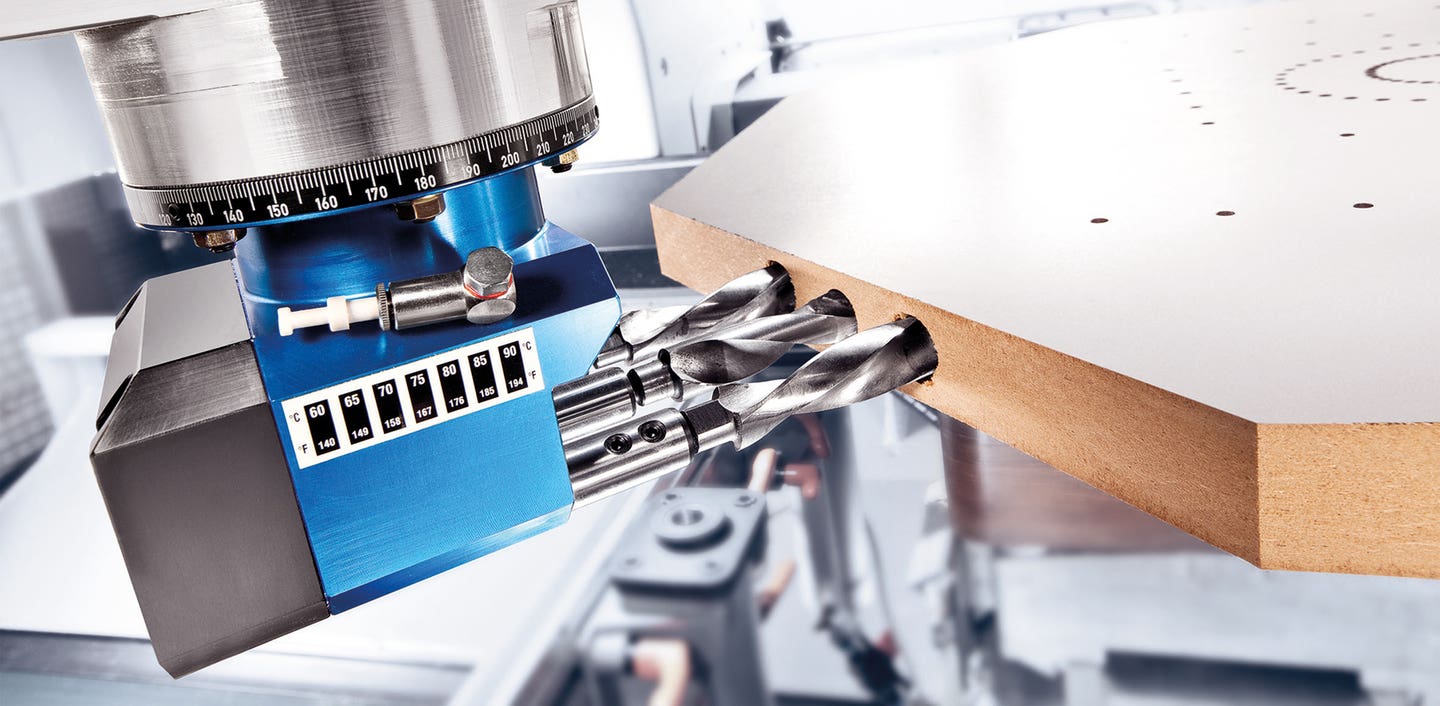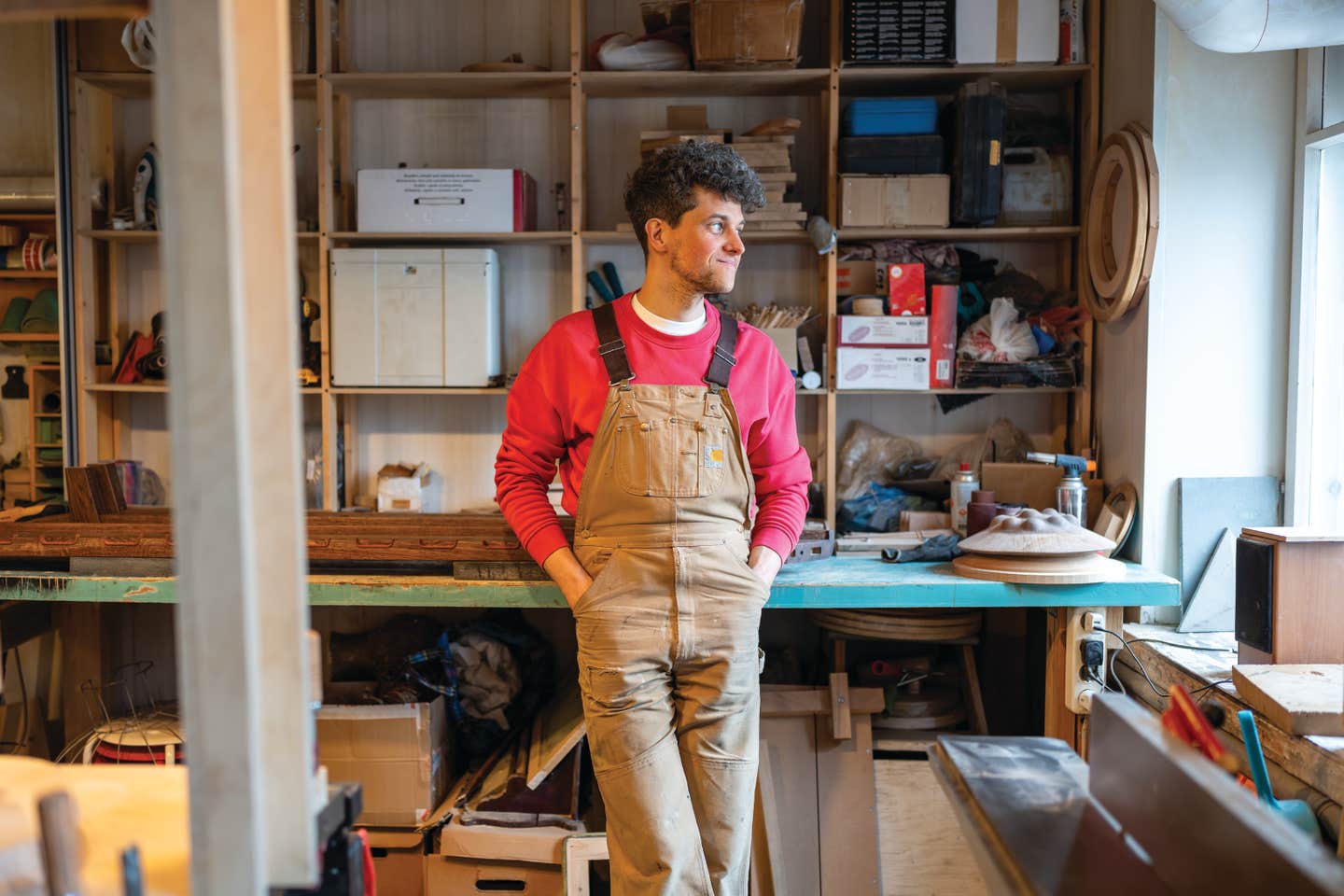Wood is looking good
The design community is promoting the natural look of wood, and other big news from the hardwood side of the business.
A cross the kitchen and bath industry, something surprising has emerged over the past few months – a trend away from white and colored coatings and a return to natural hardwoods. The switch in direction seems to be gathering speed, according to design and trend watchers at most of the major publications. And the catchword is ‘natural’.
For 2024, Caitlin Sole at Better Homes & Gardens feels that unstained natural grain will outpace “the orange-stained oak cabinets from decades past.” And Leslie Corona at RealSimple.com notes that homeowners are likely to “pick lighter wood finishes like bleached-out natural woods and white oak with a light or natural tone” for their cabinets. She continues: “One huge trend we’re seeing across the board in design is the color brown and anything brown-adjacent, especially woods. Going overboard with wood in rooms by way of wall paneling, and layering large furniture pieces of different species, is especially in vogue because it adds an intense organic warmth and texture.”
Arricca Elin Sansone writes in Elle Décor that “mixing light or dark-stained woods in with saturated colors… is big.” Her point is that designers are looking for a balance between colored surfaces and natural hardwoods. She quotes Ashley Macuga, the principal designer of Collected Interiors, as saying that “color can provide a space with personality and charm, and stained woods give a space a feeling of warmth and depth.”
That’s an insightful quote. Natural hardwoods have long been associated with comfort, coziness and hominess, while color has been used either sparingly over the past few years to add a touch of individuality, or generously to make a vivacious statement about the homeowner’s character and aesthetic values.
House Beautiful also sees hardwoods as trendy. In November, the magazine’s Medgina Saint-Elien quoted Carisha Swanson, director of editorial special projects, as saying that “warm woods and natural colors will make a major comeback in 2024”. Saint-Elien added that “the trend of coating cabinets in white is taking a backseat! Natural high texture and wood patterns on cabinets bring an organic air to kitchens, especially when they’re part of a contemporary, midcentury, or Scandinavian design.”
Even Forbes is on board. In a piece about 2024 design trends, writer Jamie Gold quotes designer Sarah Robertson of Westchester County, N.Y. as saying that “natural woods are (finding) their way back into kitchen design, and we are adding touches of character woods, including oak, walnut and cherry, into almost every kitchen we design.”
All of this adds up to woodshop clients becoming the driving force in a backward trend toward a time when hardwoods offered the warmth and comfort of home.
Puzzling numbers
Despite the return to natural grain, the other big trend in the industry this winter is a confusing decline in hardwood demand worldwide. For woodshops, that may bode well for prices over the next few months, especially if the trend watchers are correct and domestic demand surges.
According to Fastmarkets (the new publisher of Hardwoods Market Report), both imports and exports are down quite a bit from last year. Slowing demand has affected the domestic market, where more expensive exotic imports are being replaced by native species, sheet goods, or not at all. That is, in large part, a product of the 7.2 percent drop in housing starts (census.gov, October 18th report). Hardwood imports fell 32 percent through August and exports of U.S. hardwoods are down 21 percent, with shipments to China leading the decline in terms of volume. American hardwood exports to smaller markets have fallen steeply too, with sales to the U.K. down 37 percent, Germany 49 percent, and Italy 43 percent. Red oak is still by far the most commonly exported hardwood, with white oak and yellow poplar next in line.
The report also noted that there is a trend away from hardwoods in the U.S. furniture industry, and toward using more panel products when possible. To counter that, the hardwoods industry is working on several promising new marketing initiatives, many of which use hardwood that doesn’t grade out at select.
Hardwood CLTs
Professor Joseph McNeel, director of the Appalachian Hardwood Center at the University of West Virginia, was struck by the fact that about half the hardwoods that are harvested in his state are considered to be low quality. They end up in products such as pallets, flooring and railroad ties, none of which add much value to the raw wood’s price point.
McNeel has been testing how well yellow poplar works as a material for making engineered cross-laminated timbers (CLTs). So far, it looks very promising. The poplar handled water, moisture, dehydration, glue retention, and shear pressure very well. The university is seeking to have the species accepted as a permittable raw material by the American Panel Association, and have it certified for commercial construction.
The problem with CLTs is that they’re very large, so a producer needs to be able to manufacture them close to a market. It’s easier and less costly to ship dried, low-quality boards to a factory than to ship substantial completed structural components across great distances.
Transportation will eventually have an impact on local hardwood supplies across the country if demand grows quickly for hardwood CLTs. And that may affect the availability of certain species that are currently popular in rustic furniture and flooring. It’s early days, but while it looks promising for sawmills that produce oak and poplar, it may signal some changes for cabinet and furniture builders if the more affordable grades become less affordable because of new demand.
Be Advised
One of the imported hardwoods in high demand is ipê (Brazilian walnut), and the journal Nature Sustainability reported in November that much of the product being used for decks and siding in the U.S. is harvested illegally. Irresponsible forestry in Brazil is being fueled by huge demand in the U.S. and Europe for the durable and attractive wood. Ipê is not a species, but rather a collective noun describing several slow-growing hardwoods in the genus Handroanthus. Unprecedented harvesting levels have now fostered a threat of extinction, so woodshops are being advised to look for Forest Stewardship Council (FSC) certified timber and seek documentation of the wood’s origins before buying it.
Beyond sustainability, another issue for hardwood buyers is grading. This can be a very subjective process, depending on whether the woodshop is buying directly from a mill or from a certified distributor.
Certification is supplied by the National Hardwood Lumber Association (NHLA), which is North America’s largest hardwood trade association. NHLA has developed and maintains a set of very specific Hardwood Lumber Grading Rules that give woodshops a uniform, industry wide guide to what they are buying. The NHLA is also a great place to keep up with what’s happening in the hardwoods sector, and shops can sign up online for its newsletters.
And for further research, there is a comprehensive, alphabetical list of wood industry organizations and associations on the WoodIndustryEd.org. The site also helps woodshops find qualified employees and blogs about trends and events in the hardwoods and cabinetmaking fields.
Hardwood Alternatives
Unlike ipê, potential extinction is not an issue with Kebony, which is part of a trend to replace unsustainable hardwood species with more ecologically sound alternatives.
Kebony (kebony.com) is a Norwegian timber that is replacing imported hardwoods in exterior applications. The manufacturer treats softwoods with a liquid formula that lets them emulate the qualities of tropical hardwoods, but without the ecological concerns. And like tropical hardwood, Kebony can age naturally without needing a new coating every few years, which is another ecological plus.
The manufacturer is currently eyeing the possibility of opening a production plant in the U.S. and using southern yellow pine and similar species to replace imports of tropical hardwoods.
Cambia from Northland Forest Products (cambiawood.com) is a thermally modified timber product that provides an affordable, environmentally friendly alternative to imported exotic hardwood species. Available species include yellow poplar, white ash, red oak and soft maple.
Plywood Ruling
Last August, U.S. hardwoods producers got a little boost when the Department of Commerce (DOC) ruled that hardwood veneered plywood sheets that were imported through Vietnam were primarily manufactured in China, and thus violated anti-dumping laws. Now, importers have to pay a 206 percent duty on those products, which means that hardwood veneer and substrate manufacturers in the U.S. are looking at a somewhat more level playing field. The ruling is good news for cabinet shops, too, as it protects the quality of building materials.
Back in 2018, DOC set rules for imports from China after finding evidence of dumping. Since then, China has apparently grown, harvested, processed and milled cores and veneers, which were assembled in Vietnam and exported to the U.S. The DOC named 37 companies in its August ruling that failed to cooperate with the investigation, so this story isn’t over yet.
For cabinet shops, the restrictions on imports may cause some higher prices and supply glitches in the spring, so this is a good time to discuss inventory with suppliers.
Laternfly impact
Twelve years ago, another Chinese import caused a bit of a stir when the sap-feeding spotted lanternfly arrived in North America. In September, researchers led by Penn State announced that there was good news on this front: the maple, willow and birch trees that they tested seemed to be relatively unaffected by the insect.
Entomologist Kelli Hoover noted that North America is “unlikely to see big impacts on the growth of trees” from this bug.
Beware of worms
Researchers from Michigan Technological University and the New Zealand Forest Research Institute have a little bit of bad news for some hardwood forest managers. Apparently, there are no native earthworms in the upper Great Lakes region because glaciers scraped away all the topsoil in the recent past (well, geologically recent – about 100,000 years ago). Now, the worms are making a comeback with the help of humans, including construction crews that move earth and fishermen who dump their bait worms indiscriminately.
The critters don’t actually eat trees, but they amend soil in ways that open up hardwoods to other dangers such as flash floods, run-off and drought. Among the most susceptible species is sugar maple, which is a dominant hardwood species in parts of Michigan’s upper pennisula as well as in northern Minnesota and Wisconsin. Hardwood buyers might want to keep the worms in mind over the next few years as prices have historically risen for threatened species such as American chestnut, elm, and more recently, white ash.
Lots of nuts
The fall of 2023 saw an unusual occurrence among hardwoods across North America. Called a ‘mast’ year, it’s when hardwood trees of different species all drop more nuts than usual. These include acorns from both red and white oak, plus seeds from other popular lumber species such as walnut and hickory. Aside from fatter squirrels, chipmunks, blue jays and deer, the excess harvest indicates warmer springtime temperatures and an abundance of airborne pollen. Hot, dry summers also encourage trees to shed more nuts, and we’ve had quite a few of those lately.
When it comes to climate issues, the Environmental Protection Agency says that America’s forests “serve as a net sink rather than a net source of carbon. The carbon emissions stored in trees in the U.S. more than offsets all activities involved in their harvesting and processing, and also counterbalances a significant percentage of the emissions from other industries and human activities.”
This article was originally published in the January 2024 issue.







